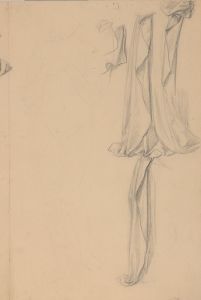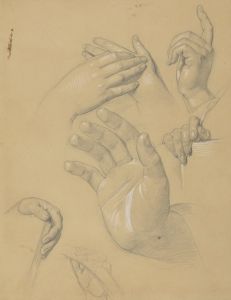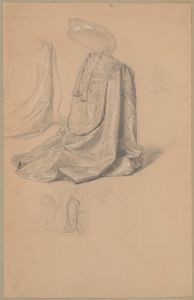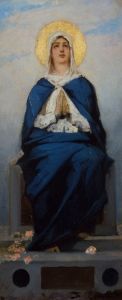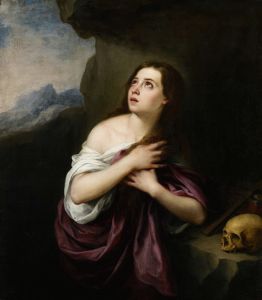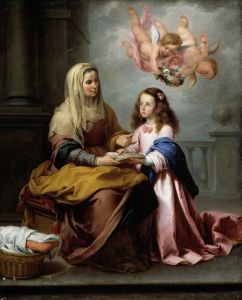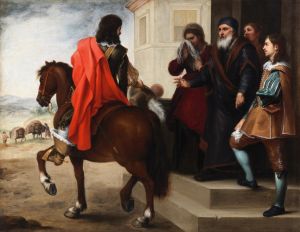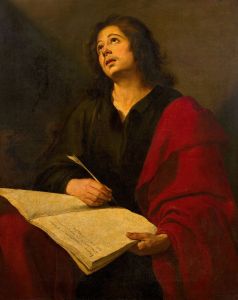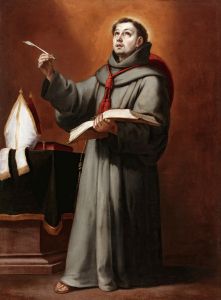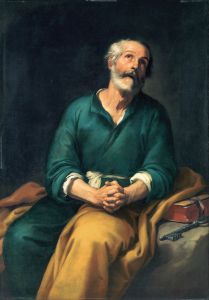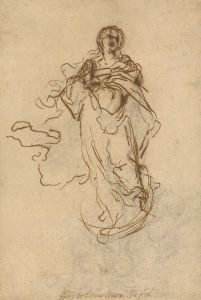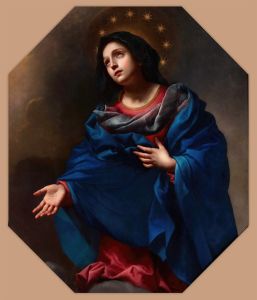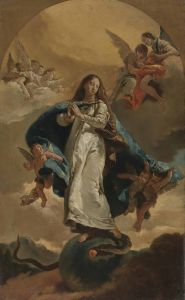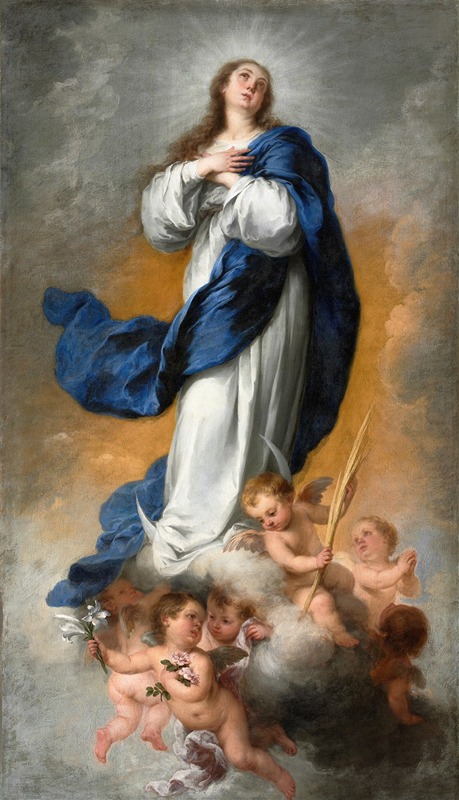
The Immaculate Conception
A hand-painted replica of Bartolomé Estebán Murillo’s masterpiece The Immaculate Conception, meticulously crafted by professional artists to capture the true essence of the original. Each piece is created with museum-quality canvas and rare mineral pigments, carefully painted by experienced artists with delicate brushstrokes and rich, layered colors to perfectly recreate the texture of the original artwork. Unlike machine-printed reproductions, this hand-painted version brings the painting to life, infused with the artist’s emotions and skill in every stroke. Whether for personal collection or home decoration, it instantly elevates the artistic atmosphere of any space.
"The Immaculate Conception" is a renowned painting by the Spanish Baroque artist Bartolomé Estebán Murillo. Created around 1678, this artwork is one of Murillo's most famous depictions of the Virgin Mary and is celebrated for its ethereal beauty and masterful execution. The painting is housed in the Museo del Prado in Madrid, Spain.
Bartolomé Estebán Murillo was born in Seville in 1617 and became one of the most important painters of the Spanish Golden Age. He is best known for his religious works, which often feature the Virgin Mary, saints, and scenes from the life of Christ. Murillo's style is characterized by its soft, warm colors, delicate brushwork, and the serene, tender expressions of his figures.
"The Immaculate Conception" portrays the Virgin Mary as a young woman, standing on a crescent moon with her hands clasped in prayer. She is surrounded by a host of cherubs and angels, who seem to float in a heavenly, cloud-filled sky. The composition is vertical, drawing the viewer's eye upward, emphasizing the divine and otherworldly nature of the scene.
Murillo's depiction of the Immaculate Conception is influenced by the Counter-Reformation, a period of Catholic revival that emphasized the purity and sinlessness of the Virgin Mary. The doctrine of the Immaculate Conception, which holds that Mary was conceived without original sin, was a significant theological concept during this time. Murillo's painting reflects this belief, presenting Mary as an idealized, pure figure, untouched by sin.
The artist's use of light and color in "The Immaculate Conception" is particularly noteworthy. Murillo employs a soft, diffused light that bathes the entire scene in a gentle glow, enhancing the sense of divine presence. The colors are predominantly soft blues, whites, and golds, which contribute to the painting's overall feeling of serenity and grace.
Murillo's skillful rendering of the cherubs and angels adds to the painting's charm and beauty. Each figure is meticulously detailed, with delicate features and expressive poses that convey a sense of movement and liveliness. The cherubs, with their rosy cheeks and playful expressions, add a touch of innocence and joy to the composition.
"The Immaculate Conception" by Bartolomé Estebán Murillo is a masterpiece of Baroque art, exemplifying the artist's ability to combine technical skill with deep religious sentiment. The painting remains a significant work in the history of art, admired for its beauty, emotional depth, and spiritual resonance. It continues to be a highlight of the Museo del Prado's collection, attracting visitors from around the world who come to marvel at Murillo's exquisite portrayal of the Virgin Mary.





